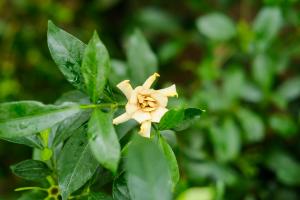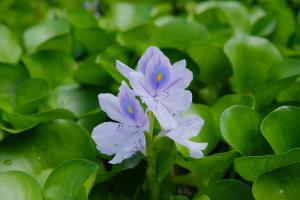Can Tomato Plants Be Mulched with Straw?
Tomatoes are a popular crop for gardeners, and mulching is an important part of their maintenance. Mulch helps to retain moisture in the soil, suppress weeds, and regulate soil temperature. One type of mulch that is commonly used is straw. But can tomato plants be mulched with straw? Let's explore this question in more detail.
The Benefits of Mulching with Straw
Straw is a popular choice for mulching tomatoes because it is easy to find, affordable, and lightweight. It can also help to improve soil structure and fertility over time as it decomposes. Straw can also help to prevent soil from drying out too quickly and reduce the need for watering. Additionally, since it doesn't contain any seeds, it won't introduce unwanted weeds into your garden.
The Drawbacks of Mulching with Straw
While straw has many benefits as a mulch, there are some potential drawbacks to consider. One is that it may attract pests like slugs or snails, which can eat the tender new growth of tomato plants. Straw can also harbor fungal spores, which can cause diseases like damping off or root rot. This is especially true if the straw is old or has been exposed to wet conditions.
How to Mulch Tomatoes with Straw
If you choose to use straw as a mulch for your tomato plants, there are a few things to keep in mind. First, make sure that the straw is clean and dry to avoid introducing pests or diseases into your garden. Next, apply a layer of straw around the base of each tomato plant, being careful not to cover the stem or leaves. Finally, water the plants thoroughly after mulching to help the straw settle and prevent it from being blown away.
Alternatives to Straw Mulch
If you are concerned about the potential drawbacks of using straw as a mulch, there are other options to consider. One is to use grass clippings, which can provide similar benefits to straw but may be less likely to attract pests. Another option is to use compost, which can help to improve soil structure and fertility while also suppressing weeds. You can also use plastic mulch or landscape fabric to help suppress weeds and regulate soil temperature, though these options may be less sustainable and eco-friendly compared to organic mulches like straw or grass clippings.
Conclusion
In conclusion, tomato plants can be mulched with straw, but it is important to consider the potential drawbacks and take steps to minimize any risks. While straw can provide many benefits as a mulch, it may attract pests or harbor fungal spores that can cause problems. If you choose to use straw as a mulch, be sure to use clean, dry straw and apply it carefully around the base of each tomato plant. If you are concerned about the risks of straw, consider using other organic or inorganic mulch materials like grass clippings, compost, plastic mulch, or landscape fabric.

 how many times do yo...
how many times do yo... how many planted tre...
how many planted tre... how many pine trees ...
how many pine trees ... how many pecan trees...
how many pecan trees... how many plants comp...
how many plants comp... how many plants can ...
how many plants can ... how many plants and ...
how many plants and ... how many pepper plan...
how many pepper plan...
































